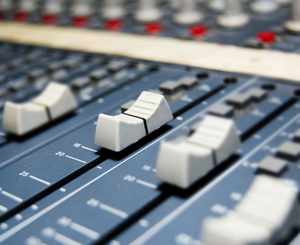Beyond The Basics: Parallel Processing Demystified
“Parallel Processing” is a term that can describe a number of techniques engineers use in pursuit of punchy, relentless backbeats, rock-solid bass-lines, and vocals that speak with power and nuance.
At its most basic level, this family of tactics is at play whenever we duplicate an audio feed, and treat each copy of that feed differently.
Say the word “parallel” to an engineer around these parts, and the first effect that comes into mind will likely be parallel compression. When applied to a drum bus, this technique carries the fond nickname “New York-style Compression.”
Properly executed, parallel compression on a drum bus can help us achieve a consistent minimum audio level while retaining some organic dynamic range, and allows us to obtain powerful, up-front sounds that still maintain clear and natural transients.
But the game doesn’t end there: For decades, bold engineers have turned to a variety of parallel effects wherever they need to sculpt new tones that merge the best features of two or more sounds. Compression, limiting, distortion, even parallel EQ can be used on a wide array of instruments to great effect.
HOW DO I DO IT?
In a broad sense, the way we route to a basic reverb is a form of parallel processing: Our audio signal is effectively split in two, with some of the sound running through the sonic spin cycle before it’s blended back into the mix underneath our unadulterated “dry” sound.
In essence, we apply dramatic effects to a duplicate of a sound. Unlike reverbs or delays, which are traditionally fed to effect boxes through an aux send, tracks earmarked for other types of parallel processing are most commonly routed via bus assigns, patchbay “mults”, or simply duplicated within a DAW.
However you chose to route and duplicate your sounds, the concept behind all parallel effects is basically the same: fearlessly crush, smash, carve, distort, or sculpt your duplicate. Then, fold this hot twisted nugget of audio back into the mix alongside your original sound.
DRUMS AND DRUM BUS
For the iconic sound of “New York-style” compression on drums, get a good blend of drums together for your main mix. Then, simply route all your drums through another bus, squeeze to taste, and fold them back into the main mix alongside your clean tracks.
The goal here is to make sure your parallel drum mix is compressed to the point where it has precious little dynamic range. For this technique, a very fast attack time often works best – Don’t be afraid to chop off some of the transients and create a big, consistently thumping backbeat. Fast releases time that pump and breathe with the rhythm of the music are fair game, as are longer release times that create a smooth and consistent decay.
Depending on your tastes, the compressed drums may sound a bit dramatic by themselves, but that’s okay. When added to your original mix, this parallel bus acts as a supporting element, allowing you to bring up the beef and average level of your drums while preserving the original transients and much of the larger dynamic changes.
A similar approach can be applied to individual drums. Snare tracks are an especially common recipient of the parallel treatment. To bring more attack and consistency out of a snare drum or its corresponding reverb send, it can be fun to crush, EQ, and perhaps gate the original sound in parallel. Feel free to go for an unusual, even unnatural drum-machine sound, to add impact and excitement to your clean snare.
But be careful, and make sure to maintain perspective! These techniques can be a quick path to big, punchy and relentless drums. While it’s easy to get drawn into the addictive process of creating ever more exciting sounds, some productions will benefit from a significantly more understated approach.
VOCALS
As with drums, many of today’s engineers feel compelled to create distinctive and ever-present vocal sounds.
But this isn’t a contemporary phenomenon. Back in the 1960s, Motown engineers Mike McClean and Lawrence Horn were using a technique on vocals that they called “Exciting Compression.”
Simply put, a vocal track would be duplicated through a console; One instance of that vocal would be treated with typical EQ, compression and reverb, and the other would be squashed and then brightened considerably with heavy-handed hi-shelf EQ.
A decade later, Curt Knoppel would design the first Aphex Aural Exciter, a box whose basic function would owe much of its heritage to this tactic.
In addition to parallel compression, parallel distortion is a common trick for vocals.
Often, applying distortion directly to a lead vocal can leave the track sounding thin, harsh, undecipherable and over-processed. Add some distortion to it in parallel however, and your have a gritty vocal that maintains much of its original body and natural growl.
BASS
A similar approach is common on bass guitar.
Sometimes, a touch of distortion is just the thing to keep the instrument articulate, defined, and audible throughout a mix. Adding some gain in parallel can help ensure you don’t lose too much low-end power in the process.
Some mixers are known for taking a more complex approach to parallel bass, creating a blend from 3 or more parallel treatments. One channel provides solid low end, one delivers a nice midrange growl, while the third channel is voiced to maximize the instrument’s snap and articulation.
While such drastic measures may seem like overkill to some of us, bass guitar is one of those instruments that almost always benefits from at least basic parallel compression or distortion to help it gain a solid foothold in the song.
STRINGS, ORCHESTRA, EVEN MIX BUS
It’s impossible to say who first made use of parallel compression in the mix process, but Motown engineer Bob Olhsson maintains that his crew stole the trick from classical engineers at DGG records who used the technique to combat the high noise floors and limited dynamic range of early recording technology.
Although parallel compression can be used to dramatic effect, it can also be a suitable approach for the audio purist. Once they’re mixed in with a full-spectrum sound, parallel tracks can have the effect of unobtrusively bringing up the quietest portions of the signal, rather than glaringly lowering the loudest peaks.
No discussion of parallel styles is complete without a mention of Michael Brauer, a New York-based mixer who is often associated with the term.
However, contrary to popular references to his work, the key feature of the Brauer style is in the use of multiple bus compressors, and not in the use of parallel treatments as we’ve defined them here. Although parallel compression may result from this style, it doesn’t paint the overall picture – But that’s enough ammunition for another article.
WHY BLEND IT?
Parallel processing isn’t just a technique that allows us to combine sounds. It can also help us find workarounds to the compromises multifaceted arrangements can impose upon us.
Alex Newport described this approach well in our recent May interview:
“The obvious example is on a vocal. Someone’s singing in the verse – you set your EQ, compression and effects, and everything sounds great. Then, the chorus hits, they start belting, and all of a sudden you’ve got a nasty 2kHz buildup. You could find an EQ setting somewhere in between as a compromise, but that’s not really acceptable.
“So, the better choice is to mult [the vocal] to two channels and develop a sound for each section. At some point I figured, there’s no reason you couldn’t do that with a kick drum or an effects return. Those moves help create these subtle dynamics that really make the song come alive.”
In the end, parallel processing is a general approach, rather than any one specific tactic. However you chose to use it, the parallel approach is just another option in the professional’s toolkit. Once practiced, it affords us yet another path we can use to chase after the sounds we hear in our minds’ ear.
Justin Colletti is a Brooklyn-based producer/engineer who works with uncommon artists, and a journalist who writes about music and how we make it. Visit him at http://www.justincolletti.com.








Carlmarc
June 24, 2011 at 10:51 pm (13 years ago)Nice, simple & on the spot for newbys.
TOJ
November 16, 2011 at 6:48 pm (13 years ago)The term “newbys” is for people who play video games, not for people who make music. Can we go ahead and say “beginners” or something like that instead? Thanks!
Christopher Sauter
October 29, 2013 at 8:58 pm (11 years ago)It’s ALL about parallel processing.. Best technique there is in my book
dre
October 21, 2015 at 2:56 am (9 years ago)what do you mean by squashing or squeezing the vocal track